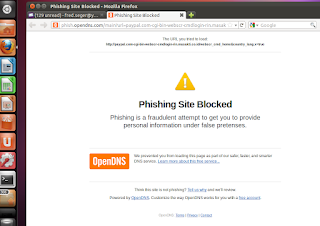The more layers you put between yourself and the internet the better. It's a proven strategy thats been used for hundreds of years. Think of the Middle Ages. A wall and gate protected the city, a moat protected the walls of the castle, and the castle was built with huge stone walls for the last layer of defense.
Think of the internet as a wilderness mixed with fantastic information, beautiful scenery, and the very rare dangerous animals that if you're not careful could harm you. Some of these beasts are hunting you, others aren't looking for anything in particular but are more predators of opportunity. Now, this doesn't mean you should lock yourself in the castle and never leave. The chances of you running into the hostile "creatures of opportunity" are rather slim but the less protected you are the greater the opportunity to be taken advantage of. There are many mechanisms of protection and A LOT cost money. This article isn't about prices or best technology. This is more of a quick lesson on the act of protection.
Note: I haven't paid for an anti-virus, anti-malware, firewall, or perimeter defense in years and I can show you how to do the same.
Your 1st line of defense is easy and free. I'm going to name the technology in this one since it's the only one I use and recommend. It's called
OpenDNS. OpenDNS acts as a go-between you and the internet. Very briefly DNS (Domain Name System) is what the computer uses to talk to the internet. It takes the name of the website you type in and translates it to numbers. Computers don't communicate like you and me (not yet), they use numbers. These numbers are how
everything communicates on the internet. OpenDNS acts as a gateway between you and the internet. It stores, scans, and determines the safety of internet web addresses for you. Not only does this make the internet a bit faster it makes it safer. So it's a free win win for you. Signup is easy and set up is very well laid out and easy to follow.

Number 2 (or the castle moat) can be the most expensive part of the equation. Some of you may already have it. A router. Routers split up your internet connection between multiple computers and devices turning your home into a network. Blu-ray players, gaming consoles, printers and even smart phones can benefit from a router. The protection part comes from whats called NAT (Network Address Translation). Basically it hides your computer from the outside network/internet kind of like a two-way mirror. You can see the internet but someone on the internet can't see you without a lot of extra work. It's what a lot of professionals call a hardware firewall. Even if you don't have more than one computer routers can be very beneficial for protection. Some routers can be very expensive depending on what they're used for. A simple wireless NAT router can be as low as $25. They're easy to set up and you'll rarely have to mess with it more than once a year.
The last layer in our multi-layered defense comes from a software firewall. I use mine to track whats leaving my network. Lets say you get a bug on your system that wants to communicate with its parent on the outside of your network. There are plenty of firewalls to use. A good outbound firewall can stop and even inform you when the software tries to leave your system and communicate with an outside host. I've used several freebies in the 11 years I've been involved with computers and have concluded some of the best are free. Comodo, AShampoo (Windows XP only), and ZoneAlarm are all excellent free firewalls. Of course Windows comes with a firewall if you don't want to download these.
That's it. A multi-layered defense for your castle err..home. Remember the more layers, the more protection. The more protection the safer you're computer is. One last item always practice safe surfing habits. If it looks dangerous or offers look too good to be true, it probably is.






